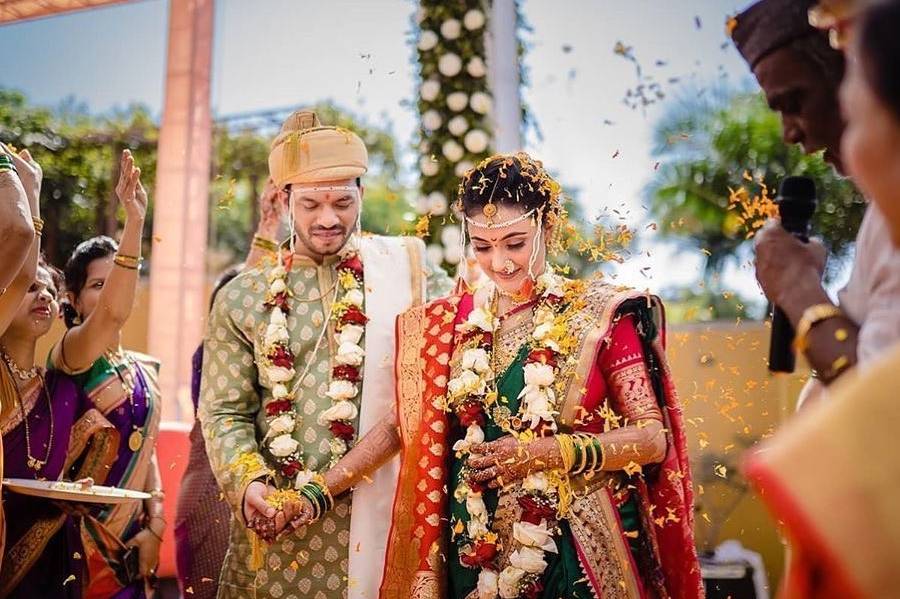
Everything you need to know about Maharashtrian Wedding
Indian weddings are known for their traditions, customs, and a vivid culture that is nothing less than a festival that goes on for many days. It’s a complete package of festivities and recreation. India has several cultures and traditions and each of them has their different wedding styles. It may include a Kumaoni Wedding, a Garhwali Wedding, a Punjabi Wedding, a Konkani Wedding, or a Maharashtrian Wedding.
Have you shifted to Mumbai, Pune, or anywhere in Maharashtra? Are you planning on attending a Maharashtrian wedding soon? Marathi weddings are quite different from the weddings you see in different parts of the country. They are simple, entertaining, joyful, and quite vibrant while being subtle in every way. Maharashtrian weddings indeed prioritize simplicity and spirituality, reflecting the core values of the culture. While they may not be as opulent or extravagant as some other Indian weddings, they are rich in traditions and vibrant in their own right. If you’re organizing a Marathi wedding, having a comprehensive understanding of the essential rituals and their significance is crucial.
To assist you in this endeavor, here’s a compiled list of Marathi wedding rituals that will enhance your appreciation and execution of this grand cultural celebration!
Maharashtrian Wedding Rituals to know
Pre-Wedding Rituals
Lagnacha Bedior
This is the first ritual in a Marathi wedding or what happens in most Hindu weddings may be with other names. First of all, patrikas or horoscopes of to-be-bride and to-be-groom are matched. This ritual has had great importance for several decades, particularly in arrange marriages. Once the priest receives kundlis of both, they analyze to find out the most suitable date for the couple’s wedding. It also helps to find out beforehand, if there are any dosh such that it can be resolved beforehand. However, parents nowadays only want their kids to be happy and understand their wishes.
Sakhar Puda
Sakhar Puda marks the beginning of the wedding festivities. It is the formal engagement ceremony that is held in the presence of both families where haldi kumkum is applied to the forehead of the bride by the groom’s mother. The bride also receives a saree, jewelry, and Sakhar Puda (sweets) from the groom’s mother as a sign of acceptance in the family. After Sakhar Puda, the couple exchange rings and this usually takes place a few days before the wedding.
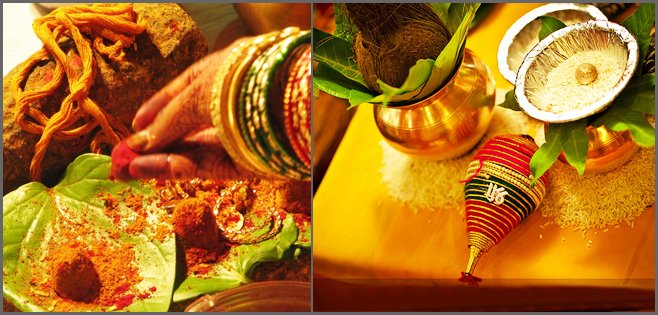
Muhurat Karane
Once the wedding date is final, another auspicious date is chosen to initiate the wedding preparations. On this designated day, five married women, known as “Suhasanie,” are invited to partake in certain customs. They grind turmeric or “Halkund” using an iron pestle adorned with mango leaves and engage in making Papads and Sandage (a mixture of soaked and ground pulses combined with spices, dried under the sun). This is a significant pre-wedding ritual associated with the Muhurat Karane. Following this tradition, wedding shopping commences. The bride’s family hosts a Rukhvat for showcasing and adorning the home with bridal attire, jewelry, kitchenware, sweets, and other bridal trousseaus, presenting a delightful glimpse into the upcoming wedding festivities.
Kelvan
Kelvan is another popular Maharashtrian wedding ritual that takes place a few days before the wedding. Both families perform pooja to their respective Kuldevta (family deity) in the presence of their families, relatives, and friends. This is performed in order to take blessings from their deity and is then followed by a family meal where everyone gathers for the Pooja to enjoy food together.
Halad Chadavane
The Halad Chadavane or Haldi Ceremony is a vibrant and joyous pre-wedding event that unfolds on the day preceding the wedding. The five married women, who earlier pounded the turmeric during the Muhurat Karane ritual, play a central role in this ceremony. These women expertly prepare a paste of Haldi and apply it to the bride and groom’s head, shoulders, hands, and feet with some mango leaves. This auspicious ritual commences at the groom’s residence and then the remaining turmeric paste is carried to the bride’s home for application. This symbolizes the beginning of their ceremonial journey towards marital bliss.

Chura Ceremony
We all know that Indian culture considers chura, churis or bangles quite significant for Indian woman and like any other culture, it is also important in the Marathi tradition. During this ritual, the bride receives a set of green glass bangles with gold or pearl bangles. Green color represents life, creation, and fertility, and is highly auspicious in Maharashtrian traditions. It embodies optimism and symbolizes the hopes and aspirations for a prosperous life for the newlywed couple, making it a cherished part of the matrimonial celebrations.

Wedding Day Rituals of a Marathi Wedding
Ganpati Puja and Devdak
No auspicious occasion or event is complete without Ganesh Puja so how can an Indian wedding start without worshipping Shri Vighnaharta Ganesha? The wedding traditions begin by invoking Ganesha and then Kuldevta is gathered at the location of the wedding to seek their blessings for the couple.
Punyavachan and Seeman Pujan
At the wedding venue, a significant ritual known as ‘punyavachan’ takes place. During this ceremony, the bride’s parents invite their relatives and guests to bless their daughter for a prosperous and happy future.
As the groom and his family arrive, the bride’s mother plays a pivotal role in welcoming them. She washes the groom’s feet, applies a tilak on his forehead, performs an aarti (a ritual of offering light), and graciously welcomes him into the wedding venue. This tradition reflects the warm and inclusive spirit of the wedding, symbolizing the union of two families and the beginning of a new journey.
Gaurihar Pujan
Adorned in a traditional Paithani saree or silk shalu, accompanied by exquisite gold jewelry and adorned with flowers in her hair, the bride participates in a significant ritual. She worships and seeks the blessings of Goddess Parvati for a prosperous and harmonious life ahead. During this sacred pooja, the bride’s maternal uncle presents her with a symbol of wealth, known as “shagun,” which she then offers to Goddess Parvati, seeking divine blessings for abundance and prosperity in her married life. This ritual symbolizes the bride’s reverence and devotion to the goddess, seeking a blessed and fulfilling journey into matrimony.
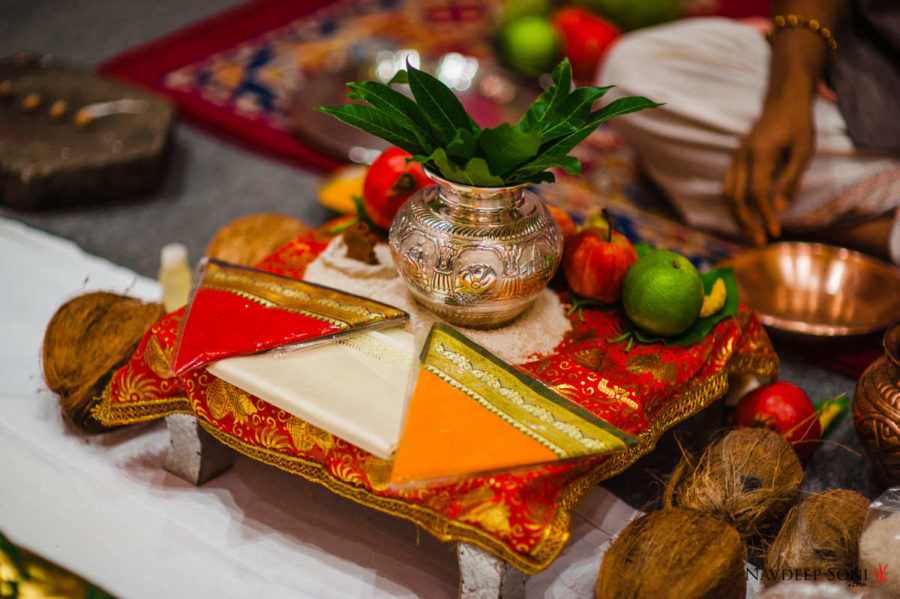
Antarpat
We all know how vivid and vibrant Indian wedding traditions are. Antarpat is a ritual in the Maharashtrian wedding which includes a thread called mundvalya tied to the head of the bride as well as the groom. After tying the thread, the groom sits at his place. During this ritual, there is a cloth or silk shawl between the bride and groom acting as a curtain that restricts them from seeing each other. This is a kind of ritual that you won’t find in the weddings of North India.
Sankalp
After Antarpat, the bride enters the mandap with her maternal uncle as the priest chants some mantras to sit by the holy fire for further rituals and traditions. The Antarpat between the couple is then removed and the couple finally gets a chance to see each other. As the couple exchange their varmala, people shower Akshata (whole rice) on them. This marks the commencement of the wedding rituals.
Kanyadaan
It is the most difficult part for the bride’s parents as it is the ritual in which the father of the bride gives her hand to the hands of her husband and shower blessings on them. This is a very emotional moment where the eyes of everyone along with the father-daughter duo become teary. The groom then promises her father to give love and respect to his wife forever. After this the couple ties a piece of turmeric to the hand of each other and this ritual is popular as Kankan Bandhane. This eliminates any evil eyes from the couple. Now it’s the groom’s turn to tie Mangalsutra to the bride’s neck while the bride applies the Chandan tilak on her husband’s forehead.
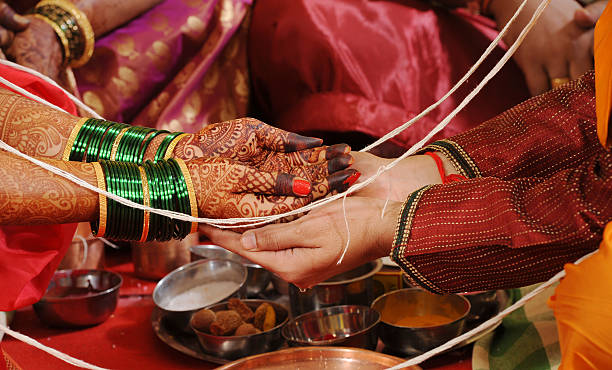
Lajahoma
The bride offers grains to the havan (holy fire) while chanting three mantras, which the groom repeats after her. Subsequently, in a symbolic act, the bride softly recites the fourth mantra. During this auspicious ritual, the bride’s parents honor and worship the couple, considering them as avatars of Lord Vishnu and Goddess Lakshmi, signifying divine blessings for a blissful marriage.
The groom then solemnly ties the Mangalsutra around the bride’s neck and applies Sindoor (vermilion) on her forehead. These actions hold profound significance in the journey of their marital commitment and spiritual togetherness.
Saptapadi
After this, the couple takes 7 pheras around the holy fire that represents the togetherness and union of the couple for the next seven lives. While taking pheras around the fire, they also take seven sacred vows. Then takes place Karmasamapti in which the couple performs Lakshmi Pujan until the fire blows away. Later, there is a fun ritual in a Maharashtrian wedding where the brother or other male relative of the bride twists the ear of the groom playfully.

Varat
Now comes the part when the bride has to leave her Maayka. Varat means the bride bidding farewell to her parents and going to her husband’s home. As the bride bids goodbye to her family & friends, the groom carries the idol of goddess Parvati from the Gaurihar Pujan. It is a very emotional moment for the bride’s family.
Grihapravesh
Once the couple reaches the groom’s home, the bride makes entry to the new family. The groom’s mother washes their feet with milk and water and then welcomes the couple by doing their pooja. The bride then slowly kicks the kalash filled with rice and they enter the house bringing in the positive energy. The homecoming of the bride is seen as a symbol of Goddess Lakshmi bringing in wealth and prosperity.
So, these were the traditions and customs that people follow in Maharashtrian wedding. If you know something, that we missed out in this, please share with us.


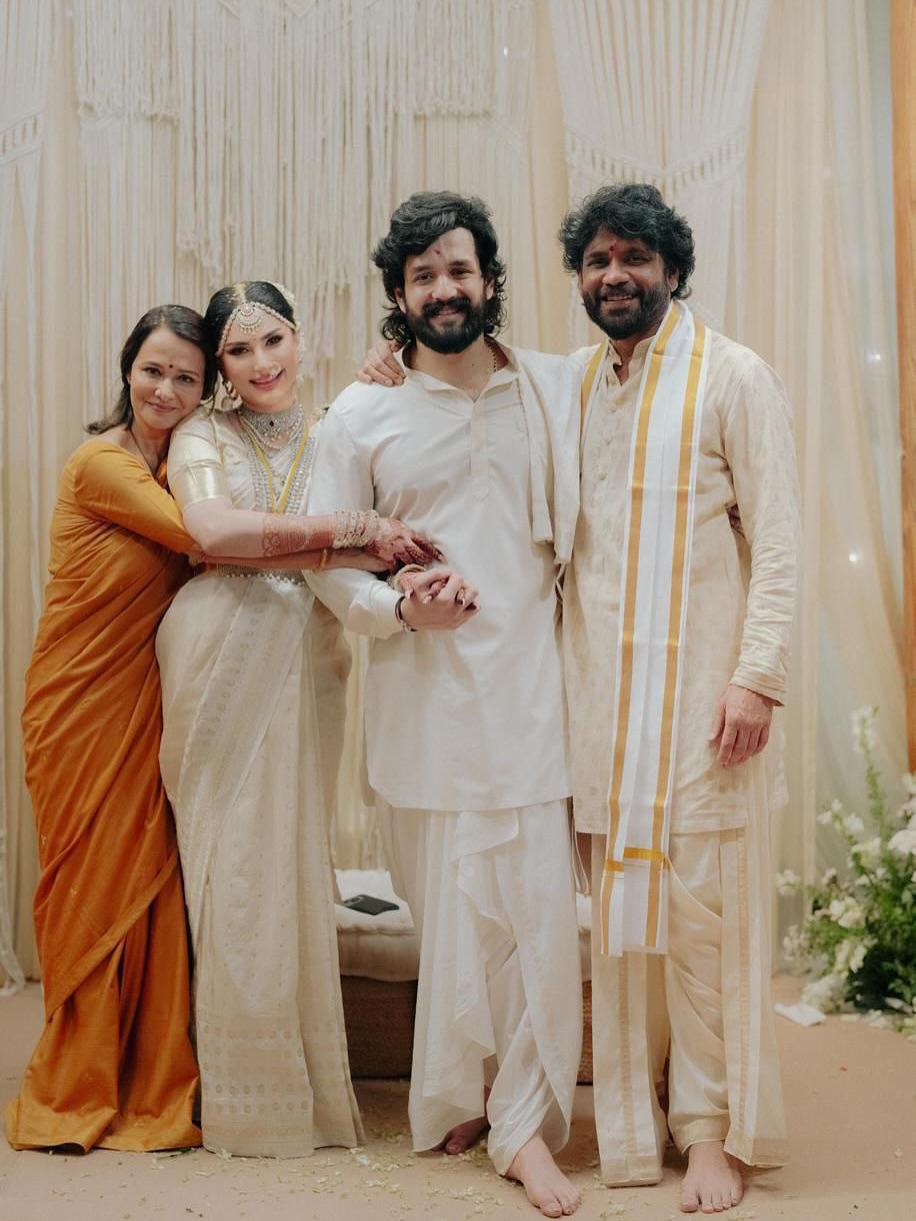
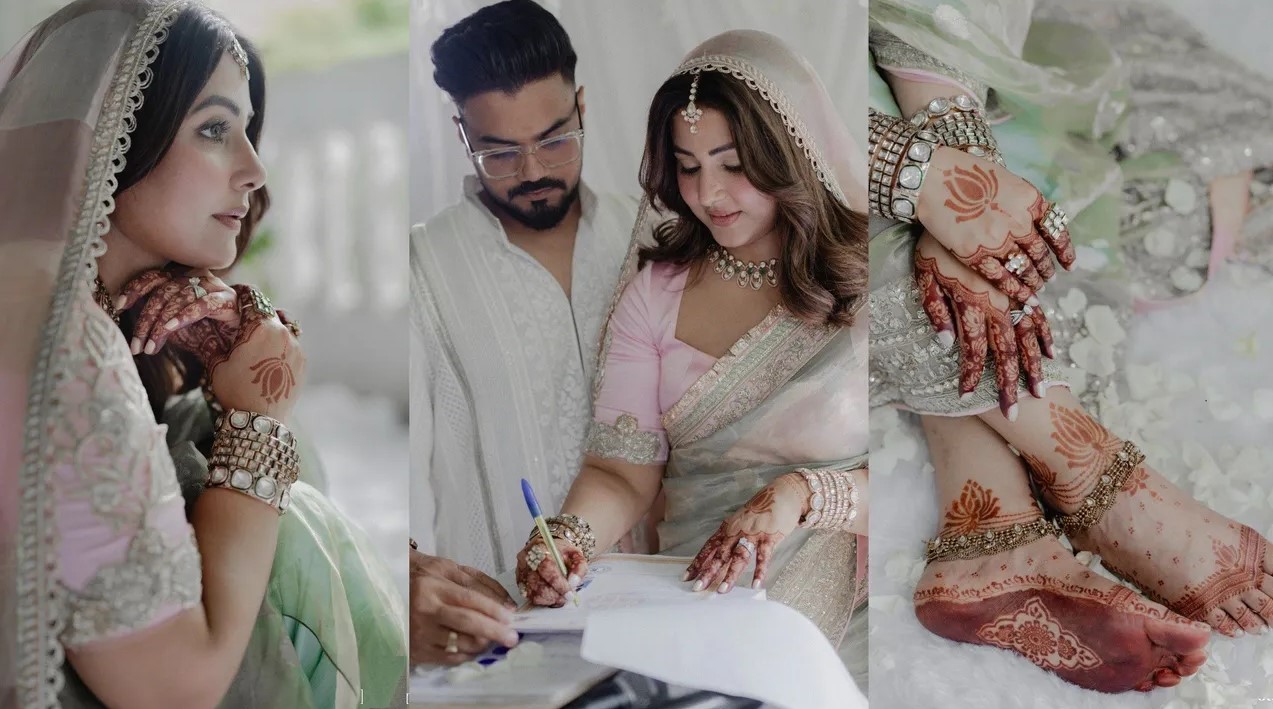
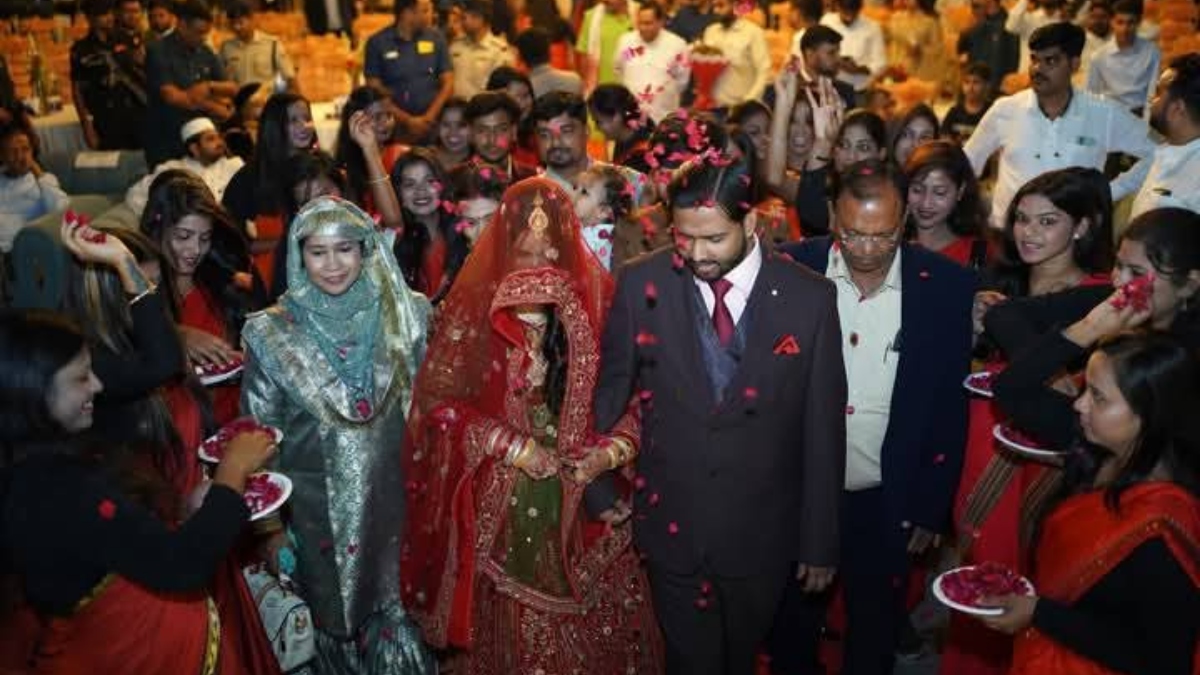
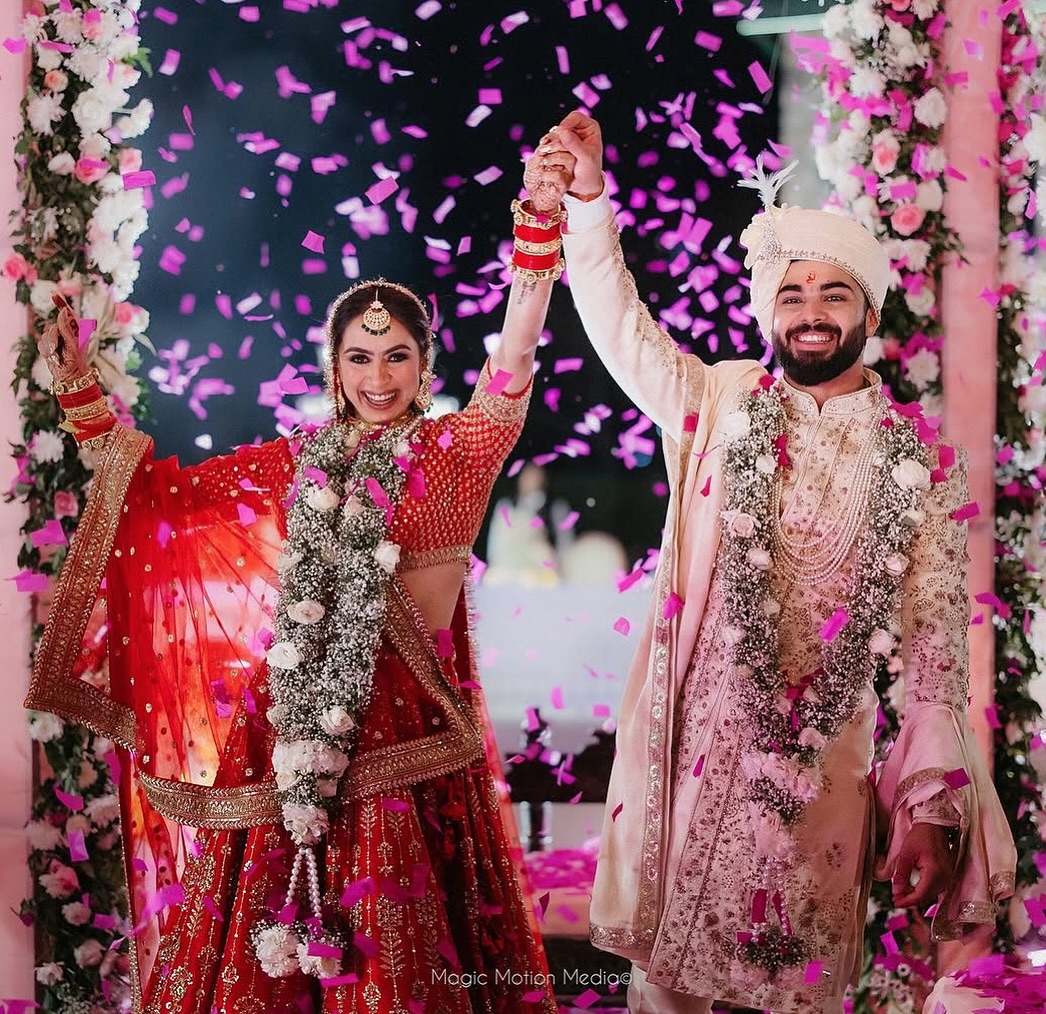
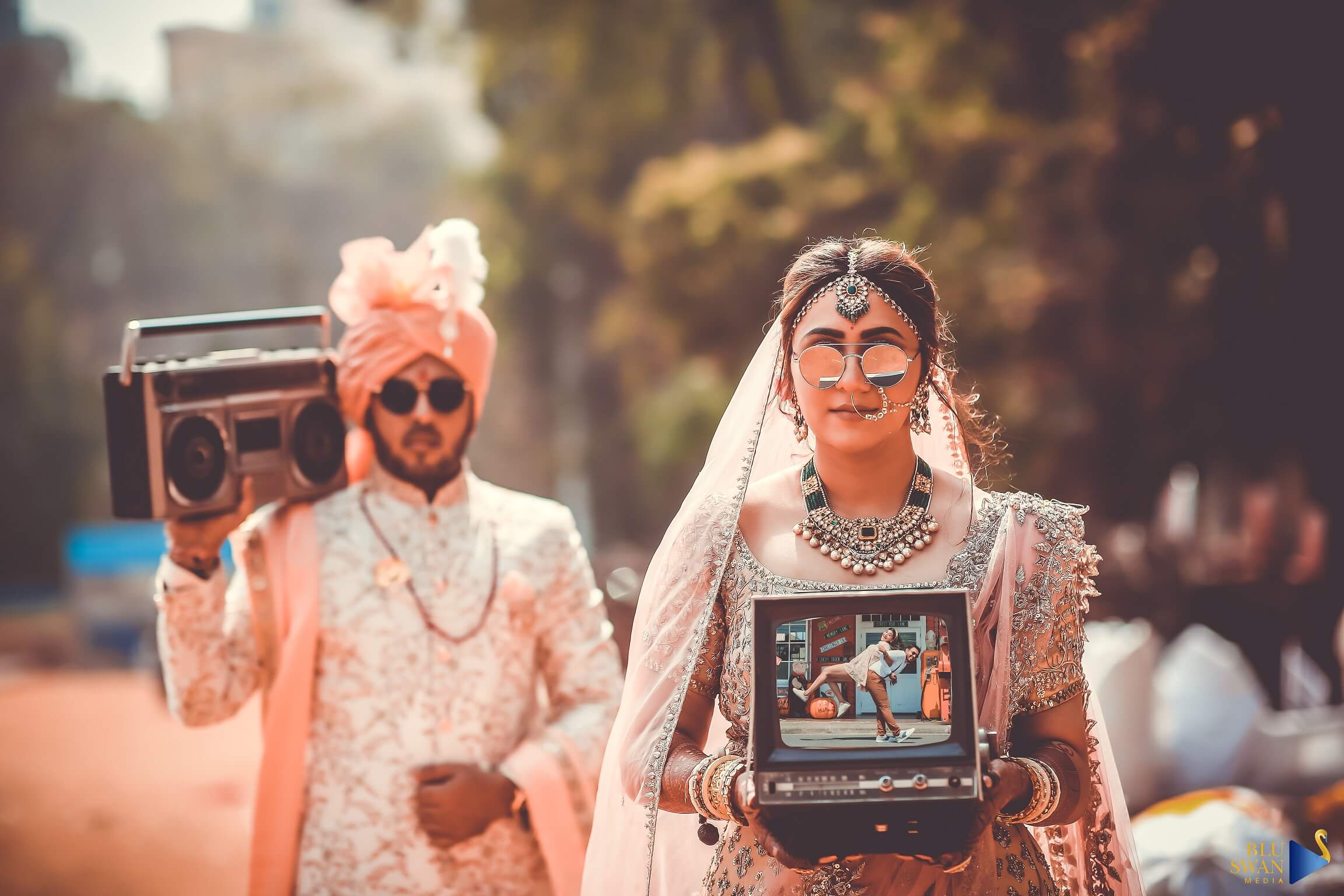
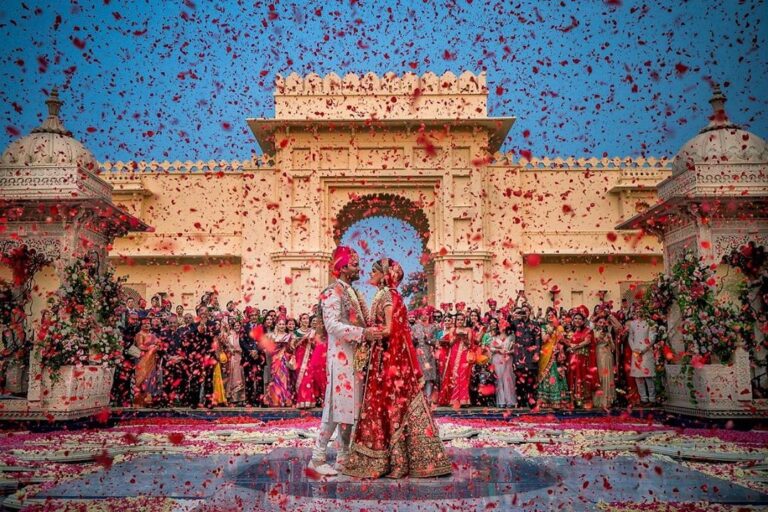
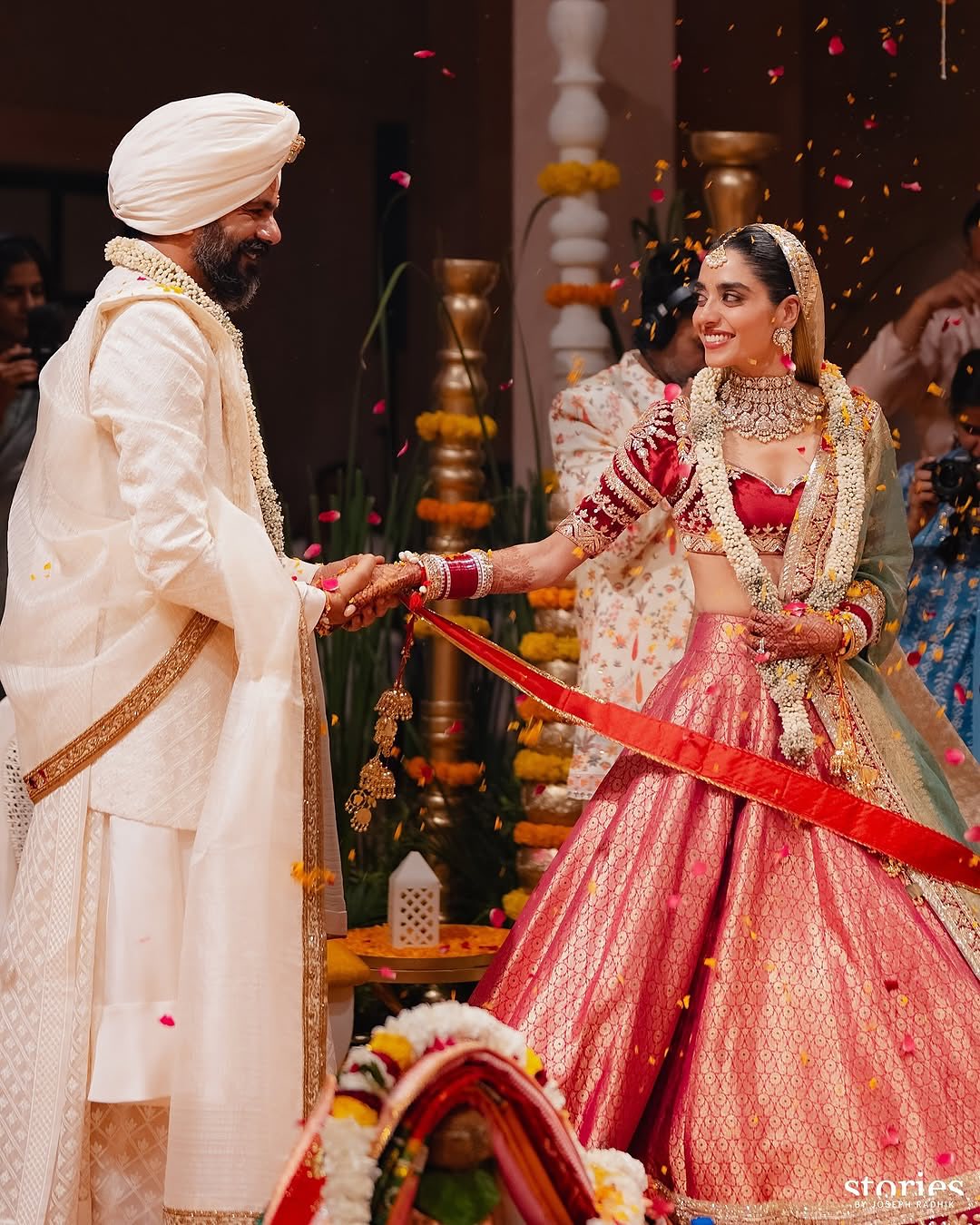
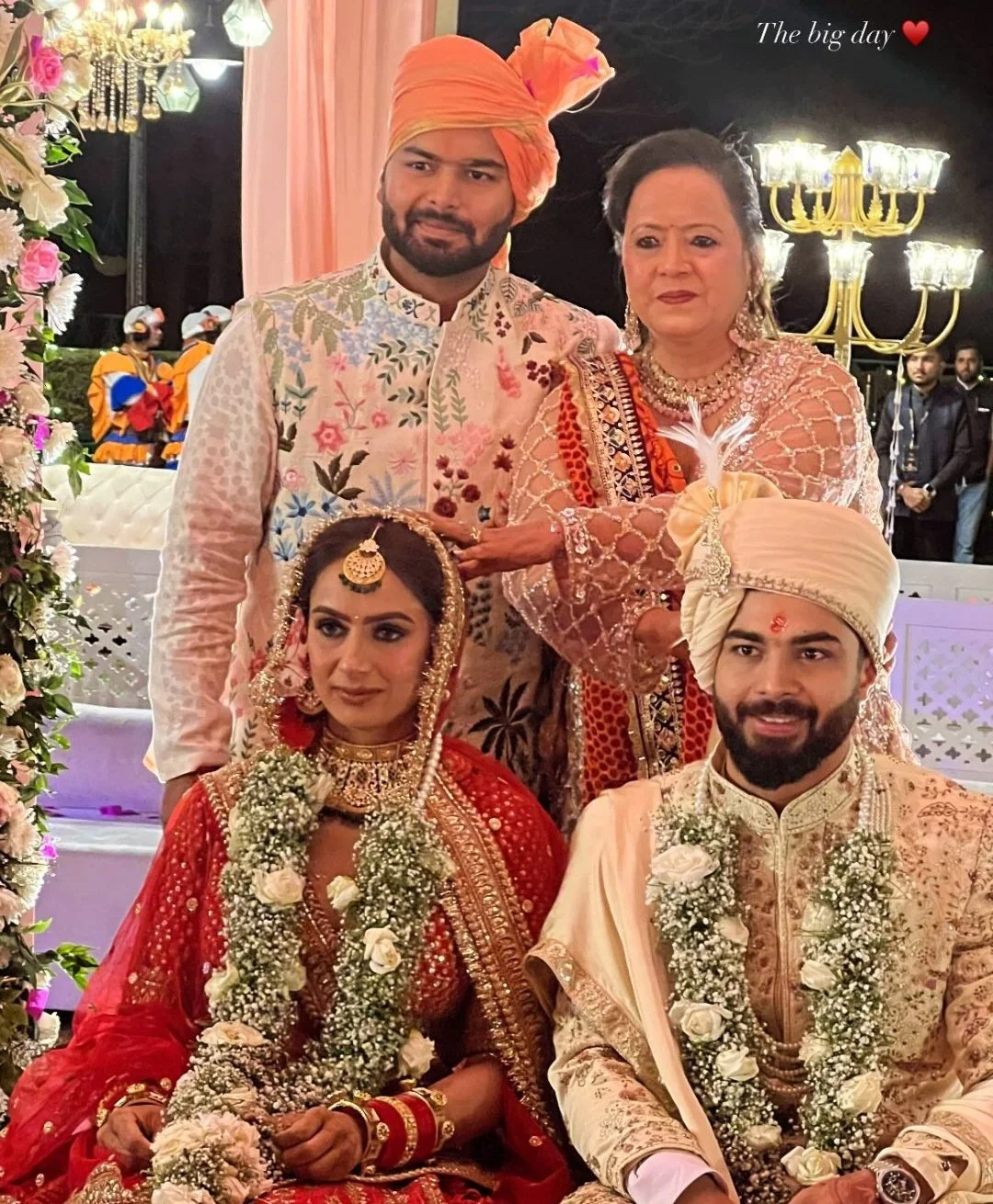
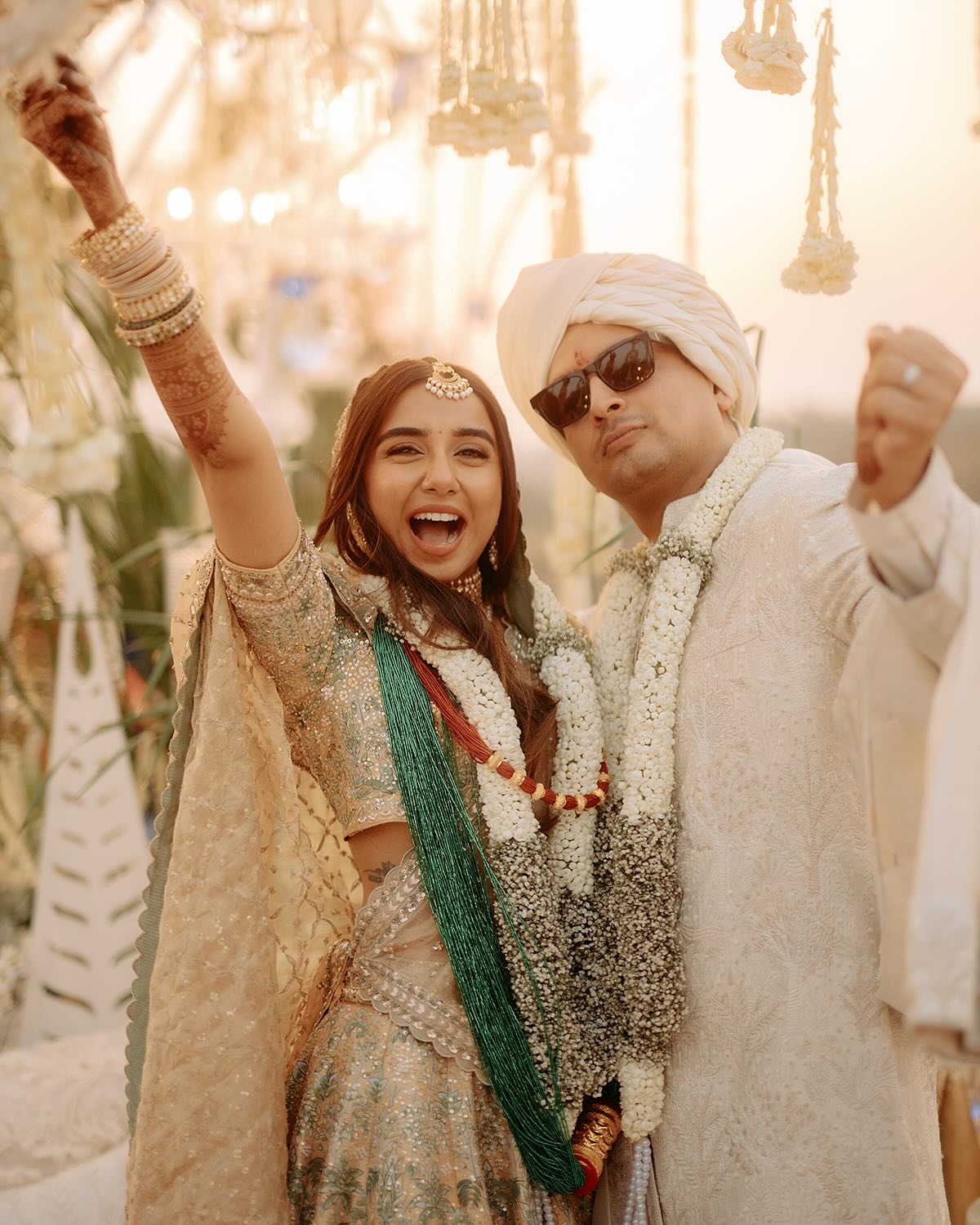
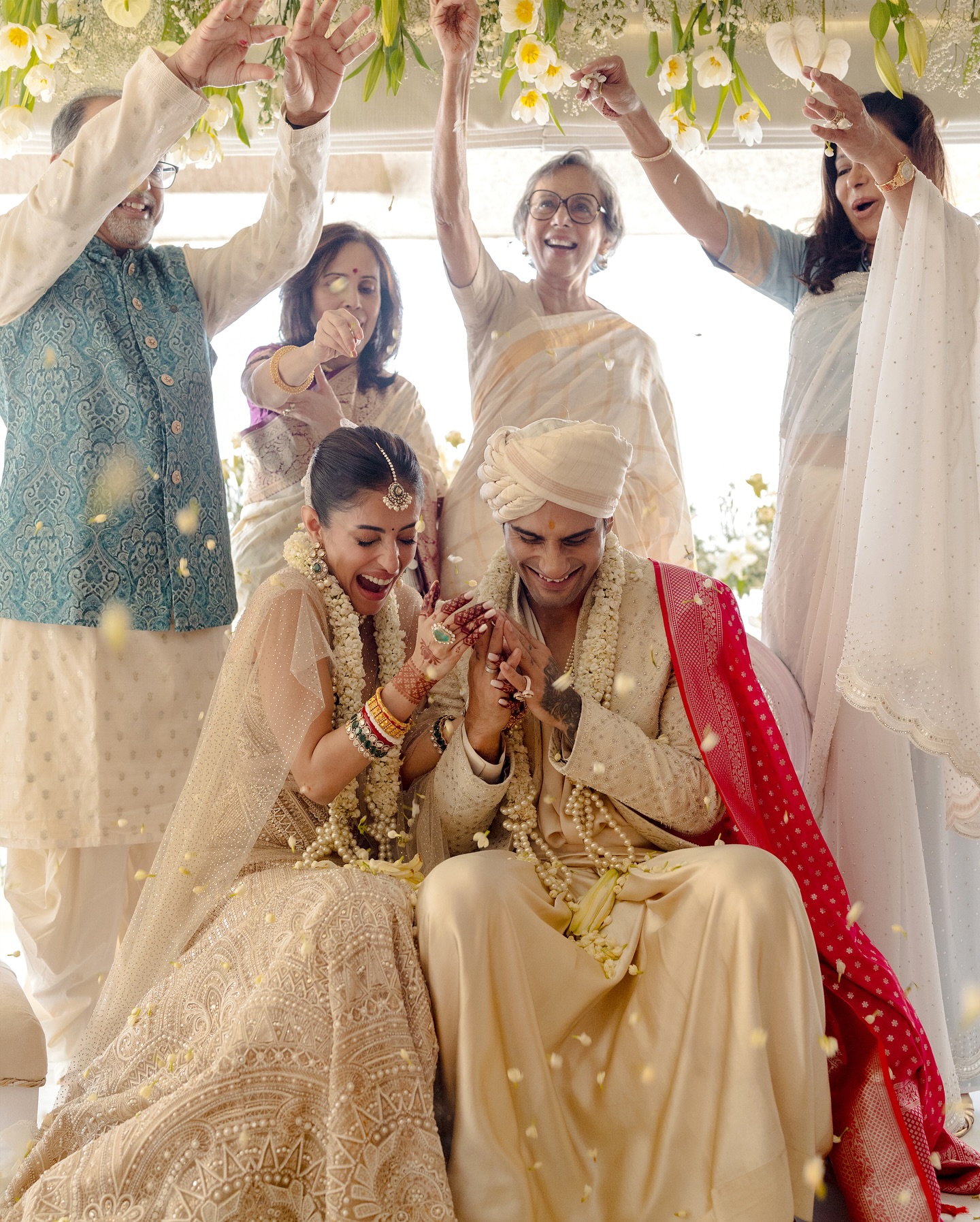
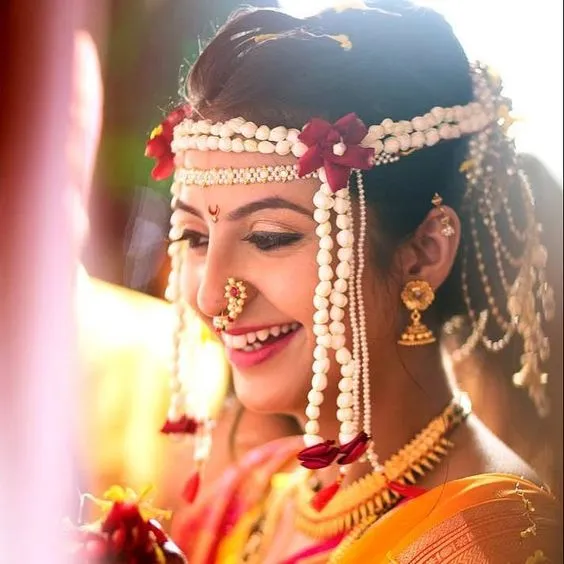
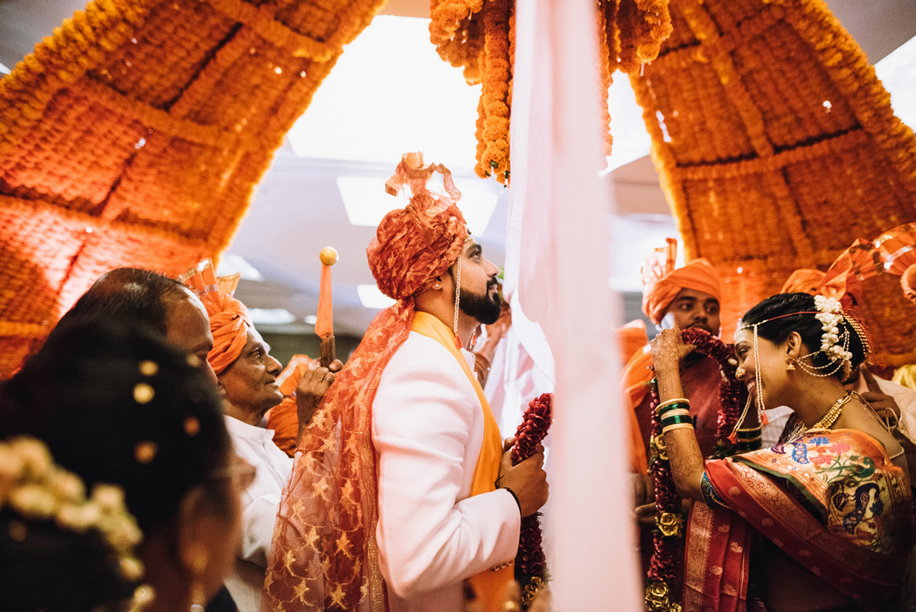

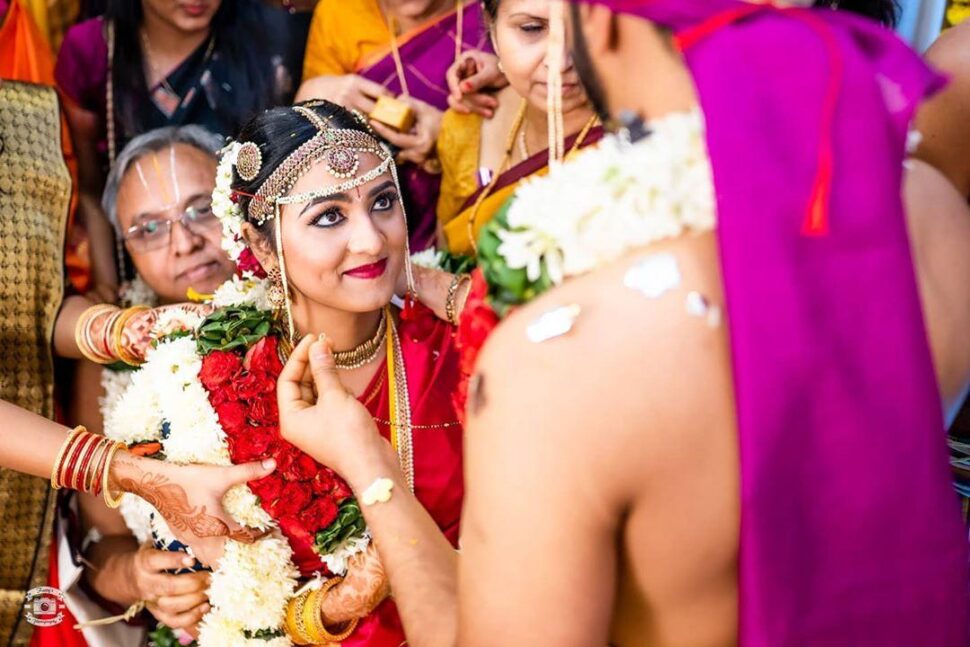


Your feedback